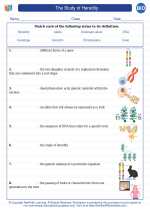Planetary Nebulae
Planetary nebulae are beautiful and complex objects that form at the end of a star's life cycle. Despite their name, they have nothing to do with planets. Instead, the term "planetary" arose because early astronomers thought they looked like the gas giants in our solar system when viewed through a telescope. In reality, planetary nebulae are the remnants of a dying star.
Formation
Planetary nebulae form when a star, similar in size to our Sun, exhausts its nuclear fuel and begins to shed its outer layers. The core of the star contracts and heats up, causing the outer layers to expand and drift away. As these layers of gas expand, they form intricate and colorful structures known as planetary nebulae.
Structure and Composition
Planetary nebulae are made up of various elements, including hydrogen, helium, oxygen, and other heavy elements forged in the core of the dying star. The expanding gas forms intricate shapes, often resembling hourglasses, rings, or bipolar jets. These structures are sculpted by the dying star's strong stellar winds and the interaction with the surrounding interstellar medium.
Observation and Study
Planetary nebulae are a popular target for astronomers due to their striking appearance and the valuable insights they provide into the late stages of stellar evolution. By studying the spectra of planetary nebulae, scientists can learn about the chemical composition of the expelled gas and the processes that shape these objects. Additionally, planetary nebulae serve as important cosmic laboratories for understanding the recycling of stellar material back into the interstellar medium, where new stars and planetary systems will eventually form.
Conclusion
Planetary nebulae are fascinating remnants of dying stars, offering a window into the complex processes that occur at the end of a star's life. Their diverse shapes and compositions make them unique and scientifically valuable objects for study and observation.
Study Guide
- What is the origin of the term "planetary nebulae"?
- Describe the formation process of planetary nebulae.
- What elements are commonly found in planetary nebulae?
- How do planetary nebulae provide insights into the late stages of stellar evolution?
- Why are planetary nebulae important for understanding the recycling of stellar material?
For further study, consider researching specific examples of planetary nebulae and their unique features, as well as the latest discoveries in the field of planetary nebula research.
.◂Biology Worksheets and Study Guides High School. The Study of Heredity

 Worksheet/Answer key
Worksheet/Answer key
 Vocabulary/Answer key
Vocabulary/Answer key
 Vocabulary/Answer key
Vocabulary/Answer key
 Vocabulary/Answer key
Vocabulary/Answer key
